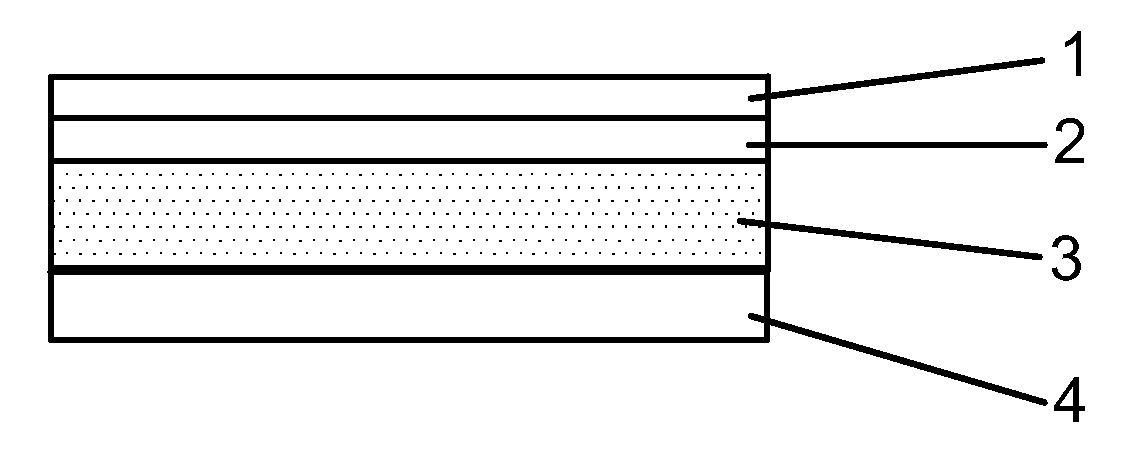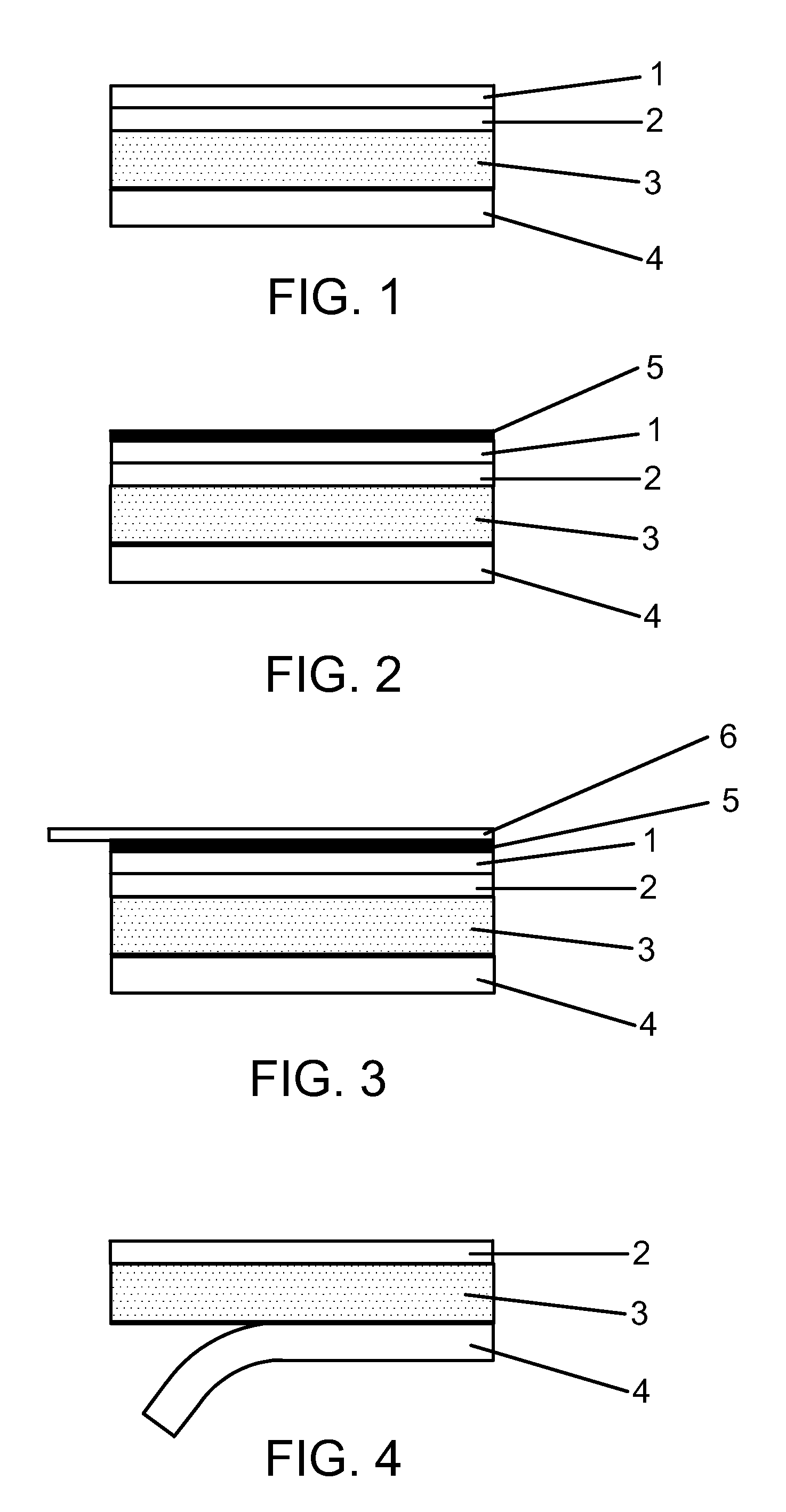Image Transfer Sheet and Method Utilizing a Rubber Based Hot Melt Adhesive
- Summary
- Abstract
- Description
- Claims
- Application Information
AI Technical Summary
Benefits of technology
Problems solved by technology
Method used
Image
Examples
example 1
An Art Reproduction Applied to Canvas, Using Sheet 1
[0093] A reproduction of a painting was scanned and printed on a Sheet 1 in an Epson Stylus CX5400 multiuse Printer. The printed image was cut out and an Application Sheet was applied over the printed image. The laminate was rubbed thoroughly, after which it was turned over. After rubbing over the front edge of the liner, it was separated from the adhesive and the laminate positioned with the adhesive surface in contact with the canvas. The transfer was rubbed all over, after which the Application Sheet was peeled off. The transfer was now completed.
example 2
Colored Pictures Transferred to T-Shirt, Using Sheet 1
[0094] A school class was to have a logo printed on the breast pocket of their T-shirts and a competition of the best design was announced. Participants prepared logos, using Sheet 1, and presented these to the jury, who selected the winner. All students, except the winner, washed their T-shirts and peeled off their designs. They then applied the winning design and, like the winner, pressed their transfers for 30 seconds with the iron at “cotton” temperature, thereby making the logo machine washable and permanently transferred painting providing a manner of integrating it with the fabric for many years of use.
example 3
Transfer of a Picture Obtained on the Internet, Using Sheet 2
[0095] A color picture was obtained on the internet and printed on Sheet 2 in a printer with waterproof inks. The picture was cut out and, thereafter, submerged for 5 minutes, after which it was taken up and its paper base peeled off. The resultant decal was positioned on a T-shirt and pressed for 30 second with the iron at “cotton” temperature. After a few minutes of cooling, the machine washable transfer was completed.
PUM
| Property | Measurement | Unit |
|---|---|---|
| Transparency | aaaaa | aaaaa |
Abstract
Description
Claims
Application Information
 Login to View More
Login to View More - R&D Engineer
- R&D Manager
- IP Professional
- Industry Leading Data Capabilities
- Powerful AI technology
- Patent DNA Extraction
Browse by: Latest US Patents, China's latest patents, Technical Efficacy Thesaurus, Application Domain, Technology Topic, Popular Technical Reports.
© 2024 PatSnap. All rights reserved.Legal|Privacy policy|Modern Slavery Act Transparency Statement|Sitemap|About US| Contact US: help@patsnap.com










